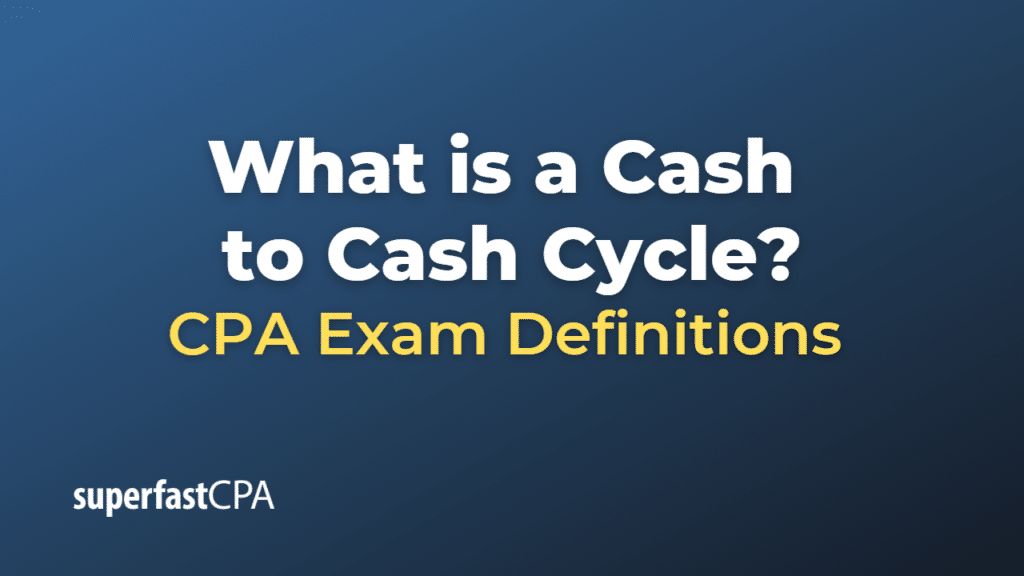Cash to Cash Cycle
The cash-to-cash cycle, also known as the cash conversion cycle (CCC) or net operating cycle, is a financial metric that measures the time it takes for a company to convert its investments in inventory and other resources into cash flows from sales. In other words, it shows how long it takes for a company to turn its inventory into cash and back into inventory again.
The cash-to-cash cycle is calculated using three components:
- Days Sales Outstanding (DSO): This measures the average number of days it takes a company to collect payment after making a sale. A lower DSO is generally better, as it indicates that the company is collecting cash from customers more quickly.
- Days Inventory Outstanding (DIO): This measures the average number of days it takes a company to sell its inventory. A lower DIO is generally better, as it indicates that the company is selling its inventory more quickly.
- Days Payable Outstanding (DPO): This measures the average number of days it takes a company to pay its suppliers. A higher DPO is generally better, as it indicates that the company is taking longer to pay its suppliers, which effectively means it’s using their money to finance operations.
The cash-to-cash cycle is calculated as follows:
Cash-to-Cash Cycle = DSO + DIO – DPO
A shorter cash-to-cash cycle is generally preferable, as it indicates that a company is managing its working capital efficiently and generating cash quickly from its operations. Conversely, a longer cash-to-cash cycle may indicate inefficiencies in the company’s operations, which can lead to cash flow problems and impact its overall financial health.
Example of Cash to Cash Cycle
Let’s consider a hypothetical example of a company called XYZ Electronics to illustrate the cash-to-cash cycle:
XYZ Electronics has the following financial data for the past year:
- Days Sales Outstanding (DSO): 40 days
- Days Inventory Outstanding (DIO): 60 days
- Days Payable Outstanding (DPO): 30 days
To calculate the cash-to-cash cycle for XYZ Electronics, we’ll use the formula:
Cash-to-Cash Cycle = DSO + DIO – DPO
Plugging in the numbers:
Cash-to-Cash Cycle = 40 days (DSO) + 60 days (DIO) – 30 days (DPO)
Cash-to-Cash Cycle = 70 days
In this example, it takes XYZ Electronics 70 days to convert its investments in inventory and resources into cash flows from sales. This means that, on average, it takes the company 70 days to go through the entire process of purchasing inventory, selling products, and collecting cash from customers, after accounting for the time it takes to pay suppliers.
A shorter cash-to-cash cycle for XYZ Electronics would indicate that it’s managing its working capital more efficiently, while a longer cycle could suggest potential inefficiencies or cash flow problems. By monitoring and working to optimize the cash-to-cash cycle, XYZ Electronics can improve its overall financial health and liquidity.













